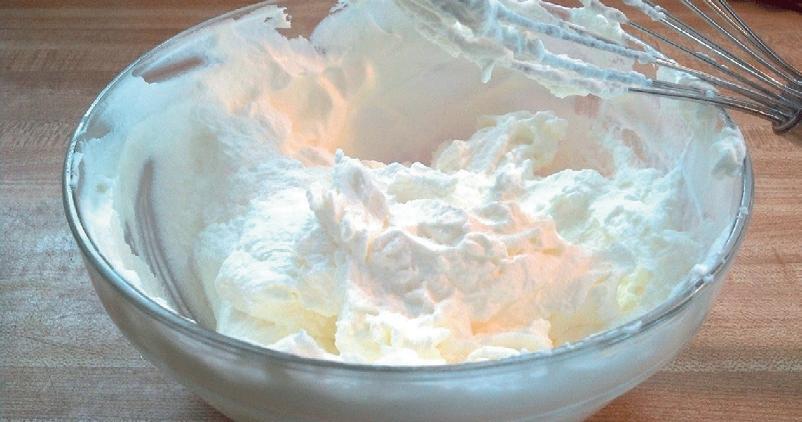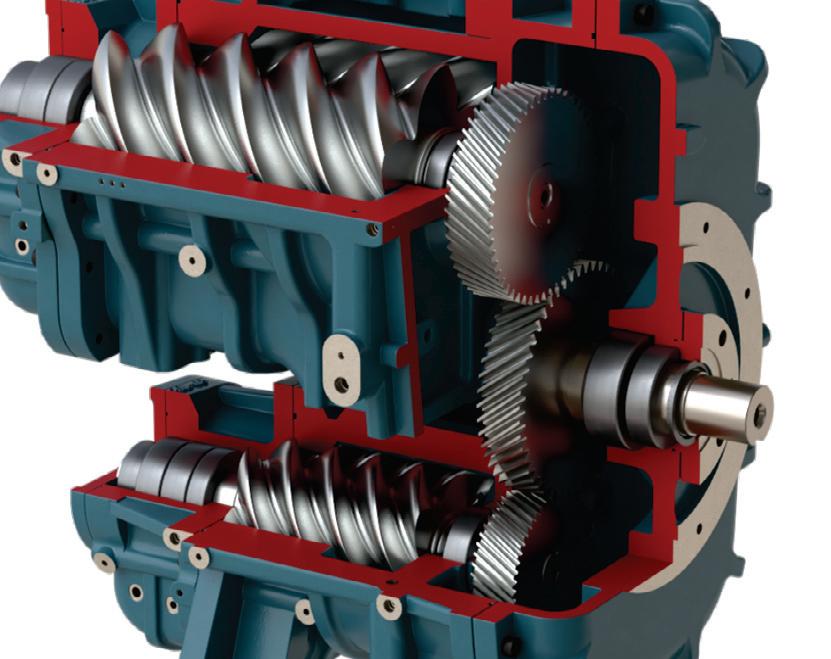
6 minute read
Cloudy or clear apple juice?
The role of heat exchangers in apple juice processing
Chris Little, Director of HRS Australia
Although the volume of apple juice consumed by Australians is fairly consistent, in line with market trends for other juice products, the value of the sector currently stands at $129.8 million, with each person consuming an average of $5.09 of juice a year.
While heat treatment is important in ensuring the safety of juice through pasteurisation or sterilisation, for some products heat plays an important role in the production process itself. As with other juice products (and orange juice in particular), the apple juice market is increasingly fragmented, with new brands and high-end freshly pressed products increasing in popularity. The physical and chemical properties must be considered when they are juiced and processed. Sugar content is typically around 11%, while dry matters vary between 13 and 20% depending on variety and growing conditions.
© Stock.Adobe.com/au/juefraphoto

Processing apples for industrial juice production typically involves the same technological processes, although, depending on the exact production method employed, they may not always occur in the same order. To produce a high-quality product, it is necessary that the treatment processes described below are non-aggressive and do not affect the product in a negative way. Such treatments also guarantee that there is no contamination from external sources.
Another factor to consider is that apples contain starches, which will foul surfaces during thermal treatment. This makes corrugated tube, or even scraped-surface, heat exchangers more appropriate than plate heat exchangers for such applications as they require less cleaning and are more energy efficient.
Because apples are a hard fruit, to obtain the most juice it is important to break them down prior to pressing — a process known as maceration. This mechanical process turns the whole fruits into pulp, and enzymes are sometimes used to increase the juice extraction. Some processes heat the pulp to a set temperature before juice is extracted; a scraped-surface heat exchanger, such as the HRS R Series, is suitable for such purposes. The juice is usually extracted using some form of mechanical pressing, and what happens to the raw (cloudy) juice which is obtained depends on whether a cloudy or clear product is required.
Separation of the various parts of the apple product and pulp is carried out using decanters and clarifiers during various stages of the process. Depending on end use and available heat sources (such as heat left over from pasteurisation), leftover pulp (pomace) may be dried or concentrated for other uses
Cloudy juice
Where a cloudy juice, which contains particles in suspension which will not precipitate out, is required, the pulp temperature is normally raised from around 10 to 25°C in order to efficiently extract the product, then further heated to 55°C to carry out the enzymatic treatment, which extracts more juice and makes the juice sweeter. The extracted juice is then sent for further treatment.
Clear juice
Producing clear apple juice follows a similar process, but the pulp temperature is raised to 55°C for the enzymatic depectinisation treatment. This removes pectins and other compounds which give the juice its cloudy appearance.
Once the juice has been obtained, it may be pasteurised (or sterilised, depending on market requirements) and, if being sold as an ingredient, it will also be concentrated to save on storage and shipping costs. Both processes may be carried out using heat exchanger-based systems, such as the HRS Thermblock Series of pasteurisers and sterilisers or the HRS Unicus Series of scraped-surface evaporators.
From here the finished product then cooled to around 3°C for storage (either as part of the pasteurisation system or using another separate heat exchanger) before being aseptically packaged, either for the consumer (in bottles or cartons) or for industrial customers (in lined boxes or IBCs).
As can be seen from this brief overview, thermal treatments play an important role in apple juice production, and therefore the energy costs associated can be significant. It therefore makes sense to choose the most efficient equipment for each stage of the process.
Automated COVID-19 contacttracing capability
Kronos has introduced an automated reporting capability for employee contact tracing that will be available for Workforce Dimensions, Kronos Workforce Central, Kronos Workforce Ready and Kronos iSeries Central customers globally, at no additional charge.
The automated reporting capability has been introduced to help streamline the employee contact-tracing process for many essential business operations across the world. Leveraging data science to analyse labour records and time and attendance data collected by a Kronos solution, the automated reporting capability can generate a simple report that can be used to identify and communicate to employees who may have come in contact with a co-worker who has tested positive or is presumed positive for COVID-19.
An employer can generate a contact-tracing report using only the afflicted employee’s ID number to identify potential contacts, ie, employees clocked in at the same time and same location as someone testing positive or presumed positive for COVID-19, based on overlapping shifts.
This information can empower organisations to partner with health officials to rapidly notify potentially exposed employees and provide appropriate care, treatment and direction for workers, such as self-quarantining and initiating heightened cleaning efforts. This in turn helps reduce the risk of further virus transmission. The employee contact-tracing capability is available free of charge with self-service instructions provided for an organisation’s Kronos administrator in the Kronos Customer Community.
The COVID-19 Resource Centre on the Kronos Customer Community provides additional tools and resources to help organisations navigate the pandemic. This includes specific information on how to clean timekeeping devices, access to employee badges, and knowledge base articles to configure systems to meet changing regulatory requirements.
Kronos Australia Pty Ltd
www.kronos.com.au
Pump system for delicate food products
HRS Heat Exchangers has developed a pump that can handle very delicate and viscous foodstuffs without damage while working at high pressure in heavy-duty applications in the food and pharmaceutical industries.
The HRS BP Series Piston Pump is a purpose-designed reciprocating positive-displacement pump. Positive displacement pumps have an expanding cavity on the suction side of the pump and a decreasing cavity on the discharge side. Liquid flows into the pump as the cavity on the suction side expands and is expelled from the discharge side as the cavity collapses. The BP Series features a hygienic design, incorporating a separator between the piston and the hydraulic chamber, to ensure there is no contact between the product chamber and the hydraulic oil, and prevent oil from coming into contact with the product.
The pump features an adjustable flow, which can range from a minimum of 300 L/h to a maximum of 20,000 L/h, with a high-pressure drop of up to 30 bar. This makes it suitable for a range of high-viscosity fluids that are shear sensitive, which contain large particulates. Clap valves allow pumping of whole fruits or vegetables. An alternative pump with a pneumatic cylinder can be supplied for low-pressure applications of less than 5 bar.
HRS has also created the BPM Series, a mobile version of its standard BP Series pump. It is mounted on a mobile skid unit for easy movement, allowing it to be used across multiple production lines and locations. This makes it suitable for food manufacturers producing short runs of specialist products and numerous trials.
HRS Heat Exchangers Australia New Zealand
www.hrs-heatexchangers.com/au/















